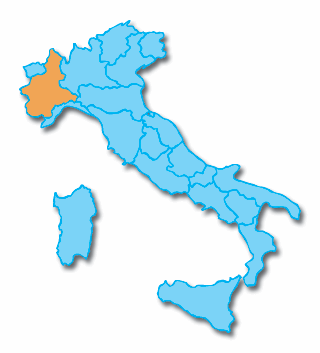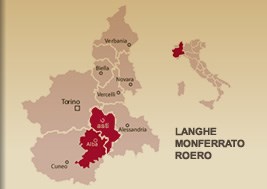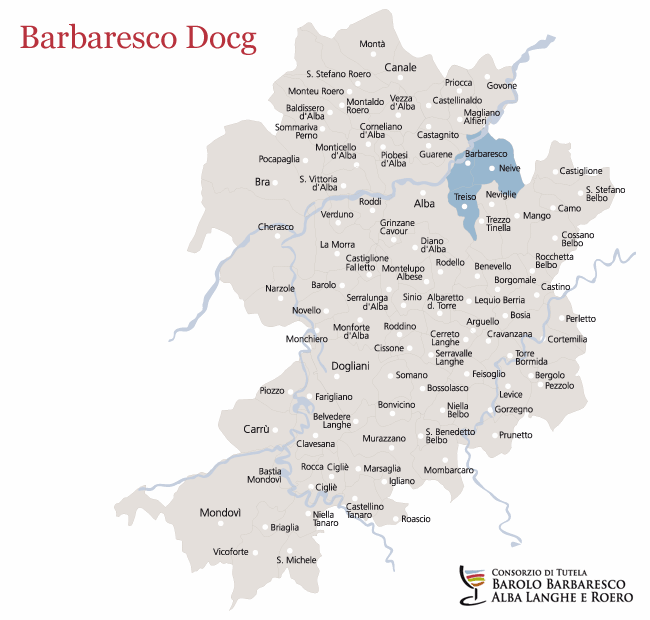BARBARESCO DOCG
.
HILLS of BARBARESCO are officially an UNESCO WORLD HERITAGE PROPERTY!
The LANGHE are the first and the only vineyard area in the world able to reach this important evaluation (paesaggivitivinicoli.it)
Producing area and denominations
Barbaresco is the name of a Village situated in Piedmont region, north west of Italy. And precisely in an area called Langhe , which is the land where also other important Italian wines are made (Barolo, Nebbiolo, Barbera, Roero).
The origins of this aristocratic wine are lost in legend. Some say that the Gauls originally arrived in Italy precisely because they were attracted by a certain excellent wine called ‘Barbaritium’. Others relate that Barbaresco derived its name from the barbarian people that caused the fall of the Roman Empire.
For sure Ancient Romans called the hill where the village of Barbaresco now stands ‘barbarica silva’, or ‘wild woods’ because it was situated on the very edge of their domains and was risky territory owing to the barbarian presence.
Professor Domizio Cavazza, the first ever headmaster of the Enological School of Alba was also the first to specify the properties of this wine during the second half of the 19th century, when the Count Cavour, the Marquees of Falletti and the Savoy Royal Family were all interested only in Barolo.
Since these times, Barbaresco has always been considered Barolo’s ‘twin’, arriving more or less simultaneously at the same set of regulatory laws, written by the same consortium: ‘consorzio di tutela Barolo, Barbaresco, Alba, Langhe e Roero’ . Barbaresco became one of the first Italian DOC wines in 1966 and, in 1980, one of the first DOCG wines.
The area of production includes the entire territory of the villages of Barbaresco, Treiso and Neive, plus part of the territory of Alba. The Consortium has defined areas of especially high quality of cultivation, known as ‘Menzioni Geografiche Aggiuntive’ (additional geographical definitions) or ‘cru’.
There are 2 denominations for Barbaresco: Barbaresco DOCG and Barbaresco DOCG Riserva.
.

Piedmont Region
.

Langhe
.

Barbaresco production area
Barbaresco Production
Barbaresco is produced entirely from Nebbiolo grape. The name of this grape reminds the Italian word ‘Nebbia’ (fog), probably the name Nebbiolo is so called because during the harvest in that area it’s really easy to have foggy days, or maybe because the bloom covers the grape.
consortium regulations stipulate that Barbaresco DOCG wines must age for a minimum of 26 months before releasing. In these 26 months at least 9 months should be made in oak barrels, while Barbaresco DOCG Riserva must age for at least 50 months. The wines must have a minimum 12% alcohol level, although most wines are closer to 13.5%.
For Barbaresco with ‘Menzioni Geografiche Aggiuntive’ (additional geographical definitions) the maximum grape yield must be 7200 Kg/Hectare and the minimum alcohol level 12.5%.
| Denomination Type | Grape | Max grape yield permitted [kg/hectar] | max wine yield permitted [l/hectar] | Minimum ageing | Ready for consumption | Min alcohol required |
|---|---|---|---|---|---|---|
| Barbaresco DOCG | Nebbiolo | 8000 | 5600 | 26 months, of which at least 9 in wood | from 1 january of the third year after the grape harvest | 12% |
| Barbaresco Riserva DOCG | Nebbiolo | 8000 | 5600 | 50 months, of which at least 9 in wood | from 1 january of the fifth year after the grape harvest | 12% |
tasting barbaresco
Barbaresco presents an intense and brilliant colour ranging from ruby to garnet red. The bouquet is very complex and can include cherry and berries jam, flowers like rose and violets. But also green pepper, cinnamon, truffles, licorice, vanilla and even aniseed. As the wine ages, it can develop smoky notes and more earthy and animal flavors like leather and tar.
It can wonderfully match dishes with truffles, red meats and aged cheeses
It should be drunk at 18-20°C in a big glass with a wide open which is perfect to appreciate the complex bouquet.
A good Barbaresco can easily be drunk 10 years after the harvest, but some of them can be really good even after 20 or more years




